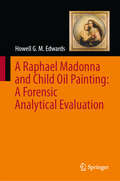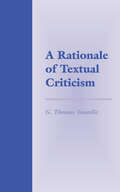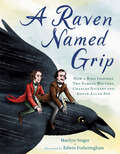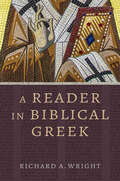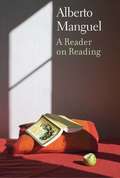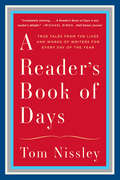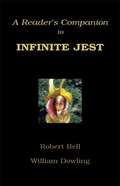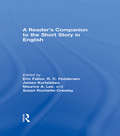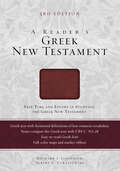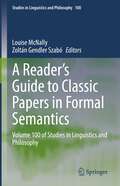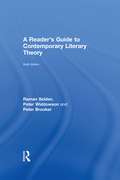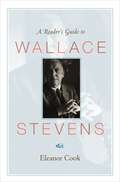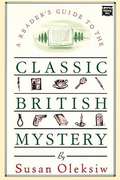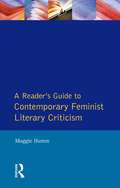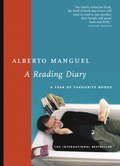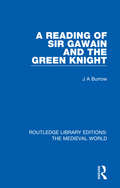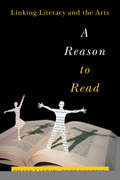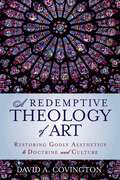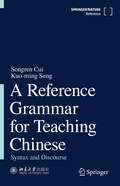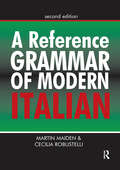- Table View
- List View
A Raphael Madonna and Child Oil Painting: A Forensic Analytical Evaluation
by Howell G. EdwardsThis book presents a comprehensive forensic analysis of an oil painting depicting a Madonna and Child in a tondo format, previously thought to be a Victorian copy. Detailed historical and scientific studies confirm that this painting was, in fact, created by Raphael around 1512 as a study for his renowned Sistine Madonna, commissioned by Pope Julius II as an altarpiece for the monastic church of San Sisto in Piacenza. The painting underwent rigorous forensic examination, combining historical research with both invasive and non-invasive scientific imaging techniques. The analysis utilized advanced physical and chemical instrumentation to determine the painting's authenticity and accurate chronological placement. A comparative review of published chemical analyses of pigments, dyes, and substrates used in Raphael’s works from collections worldwide is included. Additionally, this study explores the innovative use of artificial intelligence (AI) for facial comparison between the figures in the tondo painting, the Sistine Madonna, and other Raphael artworks. These AI-generated insights provide novel information about the identities of Raphael’s models and shed light on his working techniques, as well as those of his associates.
A Rationale of Textual Criticism
by G. Thomas TanselleTextual criticism--the traditional term for the task of evaluating the authority of the words and punctuation of a text--is often considered an undertaking preliminary to literary criticism: many people believe that the job of textual critics is to provide reliable texts for literary critics to analyze. G. Thomas Tanselle argues, on the contrary, that the two activities cannot be separated.The textual critic, in choosing among textual variants and correcting what appear to be textual errors, inevitably exercises critical judgment and reflects a particular point of view toward the nature of literature. And the literary critic, in interpreting the meaning of a work or passage, needs to be (though rarely is) critical of the makeup of every text of it, including those produced by scholarly editors.
A Raven Named Grip: How a Bird Inspired Two Famous Writers, Charles Dickens and Edgar Allan Poe
by Marilyn SingerThe endearing true story of how a love of birds connected and inspired two literary giants--Charles Dickens and Edgar Allan Poe.Years before Edgar Allan Poe's raven said "Nevermore," Charles Dickens' pet raven, Grip, was busy terrorizing the Dickens children and eating chipped paint. So how exactly did this one mischievous bird make a lasting mark on literature? From England to the United States and back again, this is the true and fascinating story of how a brilliant bird captured two famous authors' hearts, inspired their writing, and formed an unexpected bond between them. This ingenious slice of history, biography, and even ornithology celebrates the fact that creative inspiration can be found everywhere.
A Reader in Biblical Greek (Eerdmans Language Resources)
by Richard A. WrightA graduated reader of biblical Koine Greek for students, clergy, and scholars who have completed at least one year of Greek studies. This intermediate reader is for students, clergy, and scholars who have completed at least one year of Greek instruction and want to build reading proficiency. Through twenty-nine texts from the New Testament, the Septuagint, and noncanonical early Christian writings, readers will be exposed to a variety of different genres and authors while still being given enough content from each author to become acquainted with that author&’s individual style. Notes within each selection gloss low-frequency words and clarify syntactical intricacies, and each new section of texts gradually increases in its level of difficulty, so that lessons can be worked through sequentially or as stand-alone exercises, as needed. Wright&’s selections are all texts that Christians in the fourth century CE would have read, with intertextual connections between them that will stimulate discussion and reflection on the development of important ideas in the early church. Thus, this useful resource encourages progress both in Koine reading proficiency and in knowledge of Christian tradition.
A Reader on Reading
by Alberto ManguelIn this major collection of his essays, Alberto Manguel, whom George Steiner has called "the Casanova of reading," argues that the activity of reading, in its broadest sense, defines our species. "We come into the world intent on finding narrative in everything," writes Manguel, "landscape, the skies, the faces of others, the images and words that our species create. " Reading our own lives and those of others, reading the societies we live in and those that lie beyond our borders, reading the worlds that lie between the covers of a book are the essence ofA Reader on Reading. The thirty-nine essays in this volume explore the crafts of reading and writing, the identity granted to us by literature, the far-reaching shadow of Jorge Luis Borges, to whom Manguel read as a young man, and the links between politics and books and between books and our bodies. The powers of censorship and intellectual curiosity, the art of translation, and those "numinous memory palaces we call libraries" also figure in this remarkable collection. For Manguel and his readers, words, in spite of everything, lend coherence to the world and offer us "a few safe places, as real as paper and as bracing as ink," to grant us room and board in our passage.
A Reader's Book of Days: True Tales from the Lives and Works of Writers for Every Day of the Year
by Tom Nissley Joanna NeborskyA witty and addictively readable day-by-day literary companion. At once a love letter to literature and a charming guide to the books most worth reading, A Reader's Book of Days features bite-size accounts of events in the lives of great authors for every day of the year. Here is Marcel Proust starting In Search of Lost Time and Virginia Woolf scribbling in the margin of her own writing, "Is it nonsense, or is it brilliance?" Fictional events that take place within beloved books are also included: the birth of Harry Potter's enemy Draco Malfoy, the blood-soaked prom in Stephen King's Carrie. A Reader's Book of Days is filled with memorable and surprising tales from the lives and works of Martin Amis, Jane Austen, James Baldwin, Roberto Bolano, the Brontë sisters, Junot Díaz, Philip K. Dick, Charles Dickens, Joan Didion, F. Scott Fitzgerald, John Keats, Hilary Mantel, Haruki Murakami, Flannery O'Connor, Orhan Pamuk, George Plimpton, Marilynne Robinson, W. G. Sebald, Dr. Seuss, Zadie Smith, Susan Sontag, Hunter S. Thompson, Leo Tolstoy, David Foster Wallace, and many more. The book also notes the days on which famous authors were born and died; it includes lists of recommended reading for every month of the year as well as snippets from book reviews as they appeared across literary history; and throughout there are wry illustrations by acclaimed artist Joanna Neborsky. Brimming with nearly 2,000 stories, A Reader's Book of Days will have readers of every stripe reaching for their favorite books and discovering new ones.
A Reader's Companion to Infinite Jest
by William Dowling; Robert BellA Reader's Companion to Infinite Jest is a guide for readers who have heard about the literary genius of David Foster Wallace's huge and sprawling novel but have been put off by its length and narrative complexity. Composed by two distinguished literary scholars, the Companion is designed both for general readers and for college students taking courses on postmodern fiction.
A Reader's Companion to the Short Story in English
by Erin Fallon R. C. Feddersen James Kurtzleben Maurice A. Lee Susan Rochette-CrawleyAlthough the short story has existed in various forms for centuries, it has particularly flourished during the last hundred years. Reader's Companion to the Short Story in English includes alphabetically-arranged entries for 50 English-language short story writers from around the world. Most of these writers have been active since 1960, and they reflect a wide range of experiences and perspectives in their works. Each entry is written by an expert contributor and includes biography, a review of existing criticism, a lengthier analysis of specific works, and a selected bibliography of primary and secondary sources. The volume begins with a detailed introduction to the short story genre and concludes with an annotated bibliography of major works on short story theory.
A Reader's Greek New Testament: Third Edition
by Albert L. Lukaszewski Richard J. GoodrichA Reader&’s Greek New Testament: Third Edition saves time and effort in studying the Greek New Testament. If a Greek word appears in the New Testament fewer than 30 times, then a definition is provided. This serves as an aid when you encounter less common vocabulary, allowing you to focus on reading, comprehension, parsing, and grammatical issues. You no longer have to interrupt your reading, searching through a lexicon! Featuring a handsome Italian Duo-Tone™ binding, A Reader&’s Greek New Testament: Third Edition is a practical, attractive, and surprisingly affordable resource.Features of this third edition include: footnoted definitions of all words occurring 30 times or less; mini-lexicon of all words occurring more than 30 times; Greek text underlying the New International Version; footnotes comparing the Greek text with the critical text of UBS5/NA28; 4 pages of full-color maps; marker ribbon; and easy-to-read Greek fonts.
A Reader's Guide to Classic Papers in Formal Semantics: Volume 100 of Studies in Linguistics and Philosophy (Studies in Linguistics and Philosophy #100)
by Louise McNally Zoltán Gendler SzabóThis volume contains 21 new and original contributions to the study of formal semantics, written by distinguished experts in response to landmark papers in the field. The chapters make the target articles more accessible by providing background, modernizing the notation, providing critical commentary, explaining the afterlife of the proposals, and offering a useful bibliography for further study.The chapters were commissioned by the series editors to mark the 100th volume in the book series Studies in Linguistics and Philosophy. The target articles are amongst the most widely read and cited papers up to the end of the 20th century, and cover most of the important subfields of formal semantics. The authors are all prominent researchers in the field, making this volume a valuable addition to the literature for researchers, students, and teachers of formal semantics.Chapter 19 is available open access under a Creative Commons Attribution 4.0 International License via link.springer.com.
A Reader's Guide to Contemporary Literary Theory
by Raman Selden Peter Brooker Peter WiddowsonA Reader’s Guide to Contemporary Literary Theory is a classic introduction to the complex yet crucial area of literary theory. This book is known for its clear, accessible style and its thorough, logical approach, guiding the reader through the essentials of literary theory. It includes two new chapters: ‘New Materialisms’ which incorporates ecocriticism, animal studies, posthumanism and thing theory; ‘21st Century and Future Developments’ which includes technology, digital humanities, ethics and affect.
A Reader's Guide to Great Twentieth Century English Novels
by Frederick R. Karl Marvin MagalanerBiographies and discussions of the works of Joseph Conrad, D. H. Lawrence, James Joyce, E. M. Forster, Virginia Woolf, and Aldous Huxley.
A Reader's Guide to Marcel Proust
by Milton HindusProust's life and works, a detailed analysis of how the various motifs of his works twine and intertwine.
A Reader's Guide to Wallace Stevens
by Eleanor CookWallace Stevens is one of the major poets of the twentieth century, and also among the most challenging. His poems can be dazzling in their verbal brilliance. They are often shot through with lavish imagery and wit, informed by a lawyer's logic, and disarmingly unexpected: a singing jackrabbit, the seductive Nanzia Nunzio. They also spoke--and still speak--to contemporary concerns. Though his work is popular and his readership continues to grow, many readers encountering it are baffled by such rich and strange poetry. Eleanor Cook, a leading critic of poetry and expert on Stevens, gives us here the essential reader's guide to this important American poet. Cook goes through each of Stevens's poems in his six major collections as well as his later lyrics, in chronological order. For each poem she provides an introductory head note and a series of annotations on difficult phrases and references, illuminating for us just why and how Stevens was a master at his art. Her annotations, which include both previously unpublished scholarship and interpretive remarks, will benefit beginners and specialists alike. Cook also provides a brief biography of Stevens, and offers a detailed appendix on how to read modern poetry. A Reader's Guide to Wallace Stevens is an indispensable resource and the perfect companion to The Collected Poems of Wallace Stevens, first published in 1954 in honor of Stevens's seventy-fifth birthday, as well as to the 1997 collection Wallace Stevens: Collected Poetry and Prose.
A Reader's Guide to the Classic British Mystery
by Susan OleksiwLists of characters and their creators; occupations of characters; time periods, locations, and settings of stories; 100 classics; police and local forces; and the British class system
A Readers Guide to Contemporary Feminist Literary Criticism
by Maggie HummThis introduction to feminist literary criticism in its international contexts discusses a broad range of complex critical writings and then identifies and explains the main developments and debates within each approach. Each chapter has an easy-to-use format, comprising an introductory overview, an explanation of key themes and techniques, a detailed account of the work of specific critics, and a summary which includes critiques of the approach. Each chapter is accompanied by a guide to the primary texts and further reading.
A Reading Diary
by Alberto ManguelThe must-have literary book of the season! Over the course of a year, the bestselling author of A History of Reading spends a month with each of his 12 favourite books, allowing us to observe both the heart of the reading experience and how life around us can be illuminated by what we read. From June 2002 to may 2003, Alberto Manguel set out to reread twelve of the books he likes best, and to share with us, his "gentle readers," his impressions and experiences in doing so. We travel with him as he leaves Canada to set up house in a medieval presbytery in France, visits his childhood home in Argentina and embarks on trips to various other places, always carrying a book in his hand.The result is an immensely enjoyable collection for every lover of reading -- something between an intimate diary, a collection of literary thoughts, and the best travel memoir. A Reading Diary ranges from reflections on much-loved writers -- Margaret Atwood, Sir Arthur Conan Doyle, H. G. Wells, Cervantes -- to seductive introductions to others about whom you will want to know more, such as Sei Shonagon and Adolfo Bioy Casares, simultaneously providing insights into the world of today, its changing seasons and pleasures, its shifting politics and wars -- all illuminated by the great novel he is reading at the time.A Reading Diary is a walk through a year's worth of best beloved books in the company of an eclectically learned friend. Touching on themes of home and wandering, memory and loss, Alberto Manguel perfectly traces the threads between our reading and our lived experience.Excerpt from A Reading Diary:JuneSaturdayWe have been in our house in France for just over a year, and already I have to leave, to visit my family in Buenos Aires. I don't want to go. I want to enjoy the village in summer, the garden, the house kept cool by the thick ancient walls. I want to start setting up the books on the shelves we have just had built. I want to sit in my room and work.On the plane, I pull out a copy of Adolfo Bioy Casares's The Invention of Morel, the tale of a man stranded on an island that is apparently inhabited by ghosts, a book I read for the first time thirty, thirty-five years ago. . . .From the Hardcover edition.
A Reading of Sir Gawain and the Green Knight (Routledge Library Editions: The Medieval World #5)
by J A BurrowOriginally published in 1965, A Reading of Sir Gawain and the Green Knight is an interpretation of the most important poem in Middle English literature, the only fourteenth century work which can stand beside Chaucer. The book examines the poem’s conventions and purposes in a critical analysis and provides a useful and insightful introduction to ‘Sir Gawain’. It will be of interest to students and academics studying the poem of Sir Gawain and the Green Knight.
A Real Pal
by Barbara W. MakarDecodable Storybooks 2A accompany More Workbook 2 and provide additional opportunity to apply the phonetic concepts introduced in Workbook 2 to connected text. The storybooks use the same vocabulary as Workbook 2 and Storybooks 2 with the addition of one sight word was. Storybooks 2A are an excellent tool to reinforce the skills from Workbook 2 and can be used with either Workbook 2 or More Workbook 2"--Epsbooks.com.
A Reason to Read: Linking Literacy and the Arts
by Shirley Brice Heath Eileen Landay Kurt WoottonA Reason to Read is the culminating work of the ArtsLiteracy Project, an ambitious and wide-ranging collaborative that aims to promote literacy through rich and sustained instruction in the arts. At the heart of the book is the "Performance Cycle," a flexible framework for curriculum and lesson planning that can be adapted to all content areas and age groups. Each of the book's main chapters delineates and explores a particular component of the cycle. A practical, readable, and inspiring book, A Reason to Read will be of immeasurable help to school teachers, education leaders, and all who have a stake in promoting literacy and the arts in today's schools.
A Reason to Read: Linking Literacy and the Arts
by Eileen Landay Kurt WoottonA Reason to Read is the culminating work of the ArtsLiteracy Project, an ambitious and wide-ranging collaborative that aims to promote literacy through rich and sustained instruction in the arts. At the heart of the book is the &“Performance Cycle,&” a flexible framework for curriculum and lesson planning that can be adapted to all content areas and age groups. Each of the book&’s main chapters delineates and explores a particular component of the cycle. A practical, readable, and inspiring book, A Reason to Read will be of immeasurable help to school teachers, education leaders, and all who have a stake in promoting literacy and the arts in today&’s schools.
A Redemptive Theology of Art: Restoring Godly Aesthetics to Doctrine and Culture
by David A. CovingtonA Redemptive Theology of Art develops a biblical, systematic, and practical theology of aesthetics. It begins with the roots and ontology of aesthetics (vs. "art") and the architecture and narrative of affection and passion, their woes and their glory.Those who would search the Bible find little support for "art" as commonly conceived in the West. The language of aesthetics, applied to the maker’s intentions, the qualities of the work, and the responses of the audience, better addresses the questions of beauty, and better suits the discussion of human actions, beliefs, and culture than the language of art does. The Bible yields more consistent and helpful answers to questions about the broader category of aesthetics than it does to questions about art; leading in turn to better questions and a more practical and theological appreciation of human affections, beauty, and delight, and the many paths by which people, including Christians, pursue them.Using the categories and definitions from Scripture, Covington gives hope and help not only for those who labor in the arts, but for everyone who cares about the passions that motivate us. We were made for God's delight, and, though sin and bondage plague our passions, God can shape our fun, feelings, desires, affections and aversions. Feelings are neither objective nor subjective; they are redeemable. Borrowing key ideas from other Christian writers on the arts or aesthetics, Covington explores the connection between orthodox Protestant theology and a responsible, respectful treatment of arts, artists, and all aesthetic fields of human work and speech.
A Reference Grammar for Teaching Chinese: Syntax and Discourse
by Kuo-ming Sung Songren CuiA Reference Grammar for Teaching Chinese – Syntax and Discourse presents a comprehensive guide on the major issues in teaching Chinese as a foreign language. Through this reference work readers will learn all basic structures of the language, focusing on the interactions of syntactic properties, semantic nuances, and discourse contexts. The work contains ample examples and jargon-free explanations to account for some of the most nagging problems in teaching Chinese. At the heart of this reference resource are the concrete and efficient ways to help researchers in both fields of language pedagogy and Chinese linguistics as well as learners of the language.
A Reference Grammar of Modern Italian (Routledge Reference Grammars)
by Martin Maiden Professor Martin Maiden Dr Cecilia Robustelli Cecilia RobustelliThis Italian reference grammar provides students, teachers and others interested in the Italian language with a comprehensive, accessible and jargon-free guide to the forms and structure of Italian.Whatever their level of knowledge of the language, learners of Italian will find this book indispensable: it gives clear and detailed explanations of everything from the most elementary facts such as the relation between spelling and pronunciation, or the forms of the article, to more advanced points such as the various nuances of the subjunctive. Formal or archaic discourse is distinguished from informal, everyday usage, and regionalisms are also indicated where appropriate. The authors have taken care to make it an easy and illuminating reference tool: extensive cross-referencing enables readers to quickly find the information they require, and also stimulates them to discover new, related facts.
A Referential Theory of Truth and Falsity (Routledge Studies in Contemporary Philosophy)
by Ilhan InanThis book proposes a novel theory of truth and falsity. It argues that truth is a form of reference and falsity is a form of reference failure. Most of the philosophical literature on truth concentrates on certain ontological and epistemic problems. This book focuses instead on language. By utilizing the Fregean idea that sentences are singular referring expressions, the author develops novel connections between the philosophical study of truth and falsity and the huge literature in the philosophy of language on the notion of reference. The first part of the book constructs the author’s theory and argues for it in length. Part II addresses the ways in which the theory relates to and is different from some of the basic theories of truth. Part III takes up how to account for the truth of sentences with logical operators and quantifiers. Finally, Part IV discusses the applications and implications of the theory for longstanding problems in philosophy of language, metaphysics and epistemology. A Referential Theory of Truth and Falsity will appeal to researchers and advanced students working in philosophy of language, epistemology, metaphysics, and linguistics.
